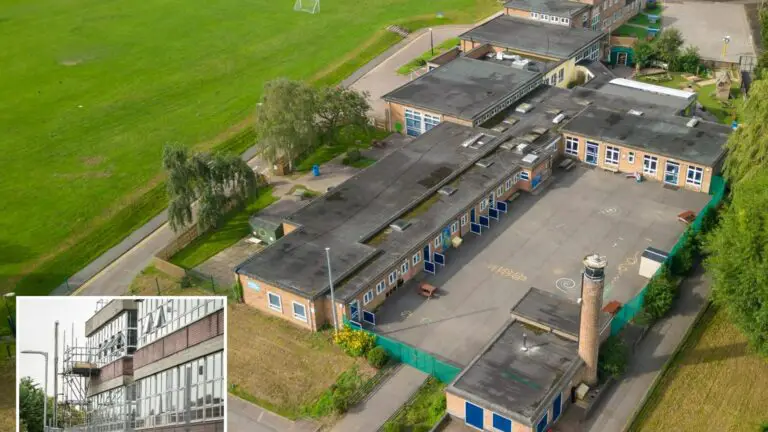Hospital at Risk of Collapse Due to Crumbling Concrete: Urgent Safety Concerns Raised
A dire situation looms over West Suffolk Hospital as a new report warns of potential collapse due to deteriorating concrete that has caused disruptions in schools across the nation.
The main building of West Suffolk Hospital received a grave warning in April, highlighting the high risk of a “catastrophic” collapse. This alarming scenario could result in loss of life and severe injuries at the 500-bed facility.
Notably, the report also identified “asbestos and dust inhalation” as additional hazards at the Bury St Edmunds unit.
The hospital, constructed in 1973, employed reinforced autoclaved aerated concrete (Raac) as a popular building material. Supported by steel rods embedded in the beams, this concrete was also commonly used in schools and courts since the 1960s.
However, recent events have cast doubts on its safety. During the summer break, an unnamed school experienced a collapse of a Raac-containing beam, prompting the government to announce a change in their approach towards managing this material. The confidence in structures containing Raac has been eroded, resulting in the closure of more than 100 schools, 41 hospitals, and at least six courts. Numerous other institutions now face a similar fate.
Compelling images depict the repercussions of this crisis. Portaloos have been set up at St Thomas More Comprehensive in Eltham, South East London, after classrooms were shut down due to concrete safety concerns. Crumbling concrete in various parts of the school, including the hall, gym, canteen, drama studio, and restrooms, have prompted actions to address the issue.
In response, Schools Minister Nick Gibb stated on Friday that previous perceptions of the safety of Raac were misguided. He revealed that various incidents over the summer demonstrated that Raac, once considered low-risk, was, in fact, unsafe.
The consequences are far-reaching. Concrete inspections at schools may not be completed until December, leaving thousands of students uncertain about their education. Some affected schools are set to begin the new term with remote learning, akin to pandemic measures. Others have erected outdoor facilities, such as marquees, to conduct lessons safely on-site.
The urgency of the situation demands immediate attention and effective solutions to safeguard the lives of both students and hospital patients.

